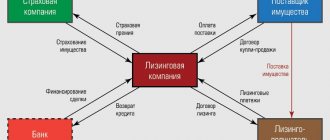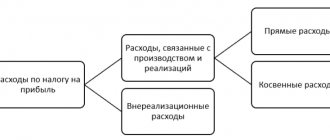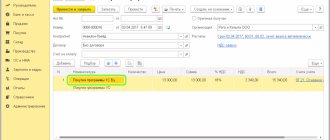Inseparable improvements and property tax from 2021
Whether or not to pay property tax on permanent improvements to rental property in 2021 depends on the property in which the capital investment was made.
If this is real estate, then the tax must continue to be paid. This also applies to objects taxed at cadastral value. An exception is property in respect of which any preferences are provided. They also apply to its improvements.
If capital investments are made in movable property, there is no need to pay tax on them.
This was indicated by the Ministry of Finance in letter dated 01/09/2019 No. 03-05-05-01/52.
Inseparable improvements to leased real estate: recommendations of the Federal Tax Service
If your capital investments are subject to taxation, follow these recommendations from the Federal Tax Service (letter dated August 15, 2019 No. AS-4-21/ [email protected] ).
- Pay tax before the permanent improvements are disposed of from your fixed assets (for example, before a capital investment lease is returned to the lessor).
- Submit the declaration to the location of your organization, and if capital investments are taken into account on the balance sheet of the unit, to the OP inspection. There is no need to register with the inspectorate at the location of the property with capital investments, because it is rented.
- But the tax needs to be transferred to where the object is located. That is, in the payment slip you must indicate OKTMO of the municipality where the leased property with inseparable capital investments is located. It must be included in the declaration.
Inseparable improvements: how to fill out section 2.1 of the property tax return
When filling out section 2.1 on permanent improvements to leased real estate, please indicate:
On line 010 - code number of the property:
- 3 - if the property has an inventory number and is assigned an address indicating the municipality;
- 4 - if there is an inventory number, but the address indicating the municipality has not been assigned.
On line 020 - inventory number of inseparable capital investments;
On line 030 - the address of the rented property, if it includes an indication of the municipality (to be filled in only if line 010 contains code 3).
On line 040 - code of the leased property in accordance with the All-Russian Classifier of Fixed Assets.
On line 050 - the residual value of inseparable capital investments as of December 31 of the tax period.
How to differentiate between movable and immovable property, see here.
You can find more complete information on the topic in ConsultantPlus. Free trial access to the system for 2 days.
Property tax on permanent improvements
Capital investments made by the lessee in the leased fixed assets (the cost of improvements to the leased property) are taken into account by the lessee as part of fixed assets until their disposal in accordance with the lease agreement.
If the tenant organization has made capital investments in a leased real estate property, the tax base of which is determined in accordance with Article 378.2 of the Tax Code of the Russian Federation , based on the cadastral value, then the tax base in relation to capital investments in the leased real estate object recorded on the balance sheet of the tenant is determined in accordance with paragraph 1 of Article 375 of the Tax Code of the Russian Federation (Letter of the Ministry of Finance of Russia dated September 3, 2014 No. 03-05-05-01/44118). According to the Ministry of Finance of the Russian Federation, all capital investments of a tenant in a rented building are taxed at the average annual cost .
The question of whether capital investments in leased premises are movable or immovable property for property tax purposes must be decided on a case-by-case basis, taking into account the actual circumstances.
As a general rule, the classification of a particular capital investment as real estate depends on whether the rights to this object are subject to state registration in accordance with Article 131 of the Civil Code of the Russian Federation and the Federal Law of July 21, 1997 No. 122-FZ “On State Registration of Rights to Real Estate and transactions with him."
In Letters dated 04/11/2013 No. 03-05-05-01/11960, dated 02/25/2013 No. 03-05-05-01/5322, the Russian Ministry of Finance noted that when considering the issue of classifying objects as movable and immovable property, it is necessary to take into account the provisions of the Federal Law of December 30, 2009 No. 384-FZ “Technical Regulations on the Safety of Buildings and Structures”, as well as OKOF.
According to representatives of the Ministry of Finance of the Russian Federation, capital investments made by a tenant in a leased property, accepted by the tenant for registration as fixed assets on January 1, 2013, are not movable property and are subject to taxation until their disposal.
The Federal Tax Service of Russia in Letter dated March 28, 2018 No. BS-4-21/ [email protected] recommends using the explanations given in Letter of the Ministry of Industry and Trade of Russia dated March 23, 2018 No. OV-17590-12. It states, in particular, that the Ministry of Industry and Trade of Russia, as the federal executive body responsible for the implementation of industrial policy, considers the classification of equipment, machinery and other fixed assets of industrial production as real estate unjustified .
Inseparable improvements are accounted for as separate inventory items of movable property (for example, fire and security alarms, etc.) if:
- capital investments in a leased property can be used outside this property,
- dismantling of inseparable improvements does not cause disproportionate damage to the purpose of the object and (or) their functional purpose is not an integral part of the functioning of the object.
Want to know more?
Contact the professionals
Read more
Leased items and objects intended for rent
Exemption from property tax provided for in subparagraph 8 of paragraph 4 of Article 374 of the Tax Code of the Russian Federation applies to movable objects leased. Either the lessor or the lessee has the right to take advantage of the benefit, depending on whose balance sheet the fixed asset is recorded on.
Let us remind you that the question of who will put the leased asset on their balance sheet is decided by the lessor and the lessee. This is stated in paragraph 1 of Article 31 of the Federal Law of October 29, 1998 No. 164-FZ “On financial lease (leasing).” And if the movable asset ends up on the lessor’s balance sheet, then he will not have to pay property tax. The same applies to the lessee. The Ministry of Finance of Russia agreed with this approach in letter dated September 11, 2013 No. 03-05-05-01/37418 (see “Movable property recorded on the balance sheet of the lessor or lessee from January 1, 2013 as fixed assets is not subject to property tax” ).
The benefit also includes movable property intended to be provided for temporary use for a fee. This property is classified as fixed assets and is reflected in accounting as profitable investments in tangible assets (clause 5 of PBU 6/01). And since this is a fixed asset, then all the rules provided for OS are valid for it, including tax exemption. This is stated in the letter of the Ministry of Finance of Russia dated August 15, 2013 No. 03-05-05-01/33164 (see “Movable property that was acquired after January 1, 2013 for subsequent lease is not subject to property tax”).
What are inseparable improvements to property, apartments - differences from separable ones
In accordance with Article 623 of the Civil Code of the Russian Federation, improvement should be understood as changes in the condition of property in order to increase the efficiency of its use, expand its application, or to increase the value of the property.
Property improvements may be separable or inseparable. Inseparable improvements always cause damage to common property, not just the apartment. It is impossible to carry out transformations, eliminate them without compromising the integrity of the building, etc.
For example, an inseparable improvement is considered:
- Redevelopment of housing and demolition of the main walls of the building.
- Installation of a new ventilation system.
- Reconstruction or replacement of utilities, systems, pipes, batteries, equipment.
- Carrying out major renovations in the apartment.
- Replacement or demolition of an elevator, elevator shaft.
- Reconstruction of the continuation of the room in the balcony part.
- Kitchen equipment on the balcony.
- Installation of additional technical equipment.
- Replacement of electrical wiring.
- Installation of heated floors.
This list can be expanded. You must understand that permanent improvements may cause damage to common property. If we are talking about an apartment, then most likely the building of an apartment building will be damaged due to the dismantling or moving of certain elements.
And separable improvements are not harmful.
For example, these include furniture, equipment located in the apartment, household items and household items.
Inseparable apartment improvements and purchase/sale of real estate - pros, cons for the parties, risks
When buying or selling real estate, you also come across the concept of inseparable improvements, but they can be furniture, household appliances, designer renovations, etc. - that is, those things and elements that can make up the total cost of housing.
When concluding a purchase and sale transaction, inseparable improvements are prescribed in the contract indicating their price . They are used to understate the tax base and reduce the tax for the purchase of housing from the seller. This is the main advantage of a deal of this nature. The tax is paid in a smaller amount.
The disadvantages of such a deal can be different:
- First of all, the tax service can audit the transaction and prosecute the seller who hides additional income.
- Upon termination of the contract, the buyer may not receive the full amount for the property if an agreement for the purchase of inseparable improvements has not been drawn up. He will return only the one that was specified in the main contract.
It is worth paying special attention to the purchase and sale agreement .
If you doubt the purity of the transaction, contact our lawyers. They will help you understand the documentation and draw up the correct agreement, taking into account all the nuances.
The influence of inseparable improvements to the property, apartment on the relationship between the landlord and the tenant
In the case where inseparable improvements were made at the expense of the tenant, he has every right, after termination of the lease agreement, to ask the owner of the property to pay him compensation equal to the amount spent. This is discussed in Chapter 60 of the Civil Code of the Russian Federation .
It is very important to pay attention to this nuance when concluding and signing an agreement .
The clause about who will pay for inseparable improvements if necessary, and the possibility of the tenant receiving compensation, must be stated in the document . Otherwise, you won’t be able to get the money back from the landlord.
Inseparable improvements cannot be carried out without the consent and notification of the owner of the apartment or property. The tenant must give notice - preferably in writing - of this and provide all the information he knows on the matter. You can’t just go and want to radically change something in the apartment. To do this, you must obtain permission from the competent authorities!
How to check the legal purity of an apartment or house before buying it yourself
If this clause on the coordination of work was written into the contract, but the tenant did not follow it, then the likelihood of receiving compensation is reduced to zero.
Moreover, if a situation occurs with damage to the building, causing harm to other owners of the apartment building, the landlord can recover the damage caused from the tenant.
Also, non-approval of apartment improvements may cause termination of the lease agreement due to violation of the requirements specified in the document.
Options for contracts when executing a transaction with inseparable improvements to property, apartments
When concluding a transaction involving inseparable housing improvements, the contract can be concluded in one form. It should indicate not only the purchase of the apartment, but also the property located in it.
There is another option - to conclude two contracts:
- Separately for the purchase of real estate.
- Separately for the purchase of inseparable housing improvements.
The first agreement is the main one; it must be registered with Rosreestr.
The second one is additional, you can leave it in your hands, it does not require registration.







